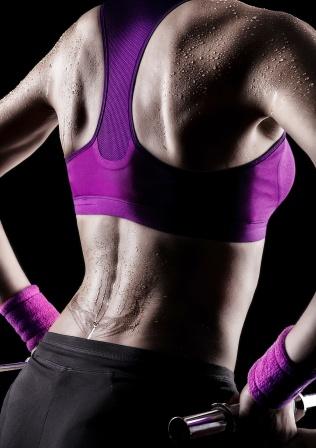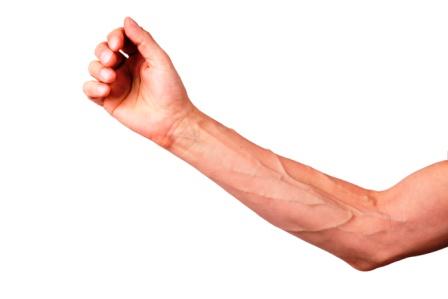Prakriti – Dosha Body Type Features As Per Master Charaka
Master Charaka has explained about Prakruti – Dosha body types in the context of patient examination. He says that Prakruti is one of the main factor to be examined in the patient, ahead of disease testing and treatment.
Table of Contents
Factors in patient examination
- Prakruti – Body Type
- Vikruti – What part is malfunctioning
- Sara – what body tissue is naturally dominant in the patient – like blood / muscle / fat / bone etc.
- Samhanana – Body stability and compactness
- Pramana – weights and measurements of body and affected body parts
- Satmya – congeniality – food and activities that the patient is naturally used to. (Pitta – likes cold food stuffs)
- Satva – mental composure and tolerance capacity of the patient
- Aharashakti – digestion capacity
- Vyayama shakti – exercise capacity
- Vaya – age
- Bala – immunity
- Read related: 8 Factors That Decide Dosha Body Type (Prakriti) – Examples
Prakriti
Prakruti –Dosha Body Type –
Prakruti is the nature of a person.
It is decided when the conception happens between sperm and ovum.
The physical and mental characters that we inherit from our parents can be classified into specific types based on Dosha analysis.
Reference: Charaka Vimana Sthana 8th Chapter
Types
Deha Prakriti – Body type:
As per Ashtanga Hrudayam Sutrasthana 1st chapter,
शुक्रार्तवस्थैर्जन्मादौ विषेणेव विषकृमेः॥९॥
तैश्च तिस्रःप्रकृतयो हीनमध्योत्तमाः पृथक् ।
समधातुः समस्तासु श्रेष्ठा निन्द्या द्विदोषजाः॥१०॥
śukrārtavasthairjanmādau viṣeṇeva viṣakṛmeḥ||9||
taiśca tisraḥprakṛtayo hīnamadhyottamāḥ pṛthak |
samadhātuḥ samastāsu śreṣṭhā nindyā dvidoṣajāḥ||10||
Like the Visha (poison) is natural and inherent to poisonous insects, similarly, the Prakruti (body type) is inherent to humans. The body type is decided during conception, based on qualities of shukra (sperm) and arthava (ovum).
Vata prakruti – Vata body type is considered as low quality
Pitta Prakruti – Pitta body type is considered as moderate quality
Kapha Prakruti – Kapha body type is considered good quality.
Tridosha Prakruti – Body type influenced equally by Vata, Pitta and Kapha is considered the best quality.
Dual body types, like Vata-Pitta, Pitta-Kapha, Vata-Kapha body types are not considered good.
Types of Prakruti –
- Single Dosha – Vata, Pitta Kapha
- (Samsrushta) Double Dosha – Vata-Pitta, Pitta-Kapha, Kapha-Vata
- Samadhatu – Vata-Pitta-Kapha – 33.33% each
Kapha Prakriti features
Kapha Prakruti features as per Charaka:
The below qualities are eveident in the person
Snigdha – unctuous, oily
Slakshna – smooth
Mrudu – soft
Madhura – sweet
Sara – firm
Sandra – dense
Manda – slow
Stimita – stable
Guru – heavy
Sheeta – cold
Vijjala – viscous
Accha – clear, clarity, well defined
Snehat Shleshmala, Snigdhanga – oily body parts, oily face
- Shlaksha – smoothness – smoothness of body parts
- Mrudu – soft – Soft Pleasing appearance, tenderness and clarity of complexion
- Sweetness – higher quality and quantity of sperm and ovum, more desire for sex, more children
- Sara Samhata Sthira shareera – Firmness, compactness and stability of the body
- Sandra – density – Dense Plumpness and roundness of all organs
- Manda – Slow in action, slow in intake of food and slow in movement
- Stimita –
–stiffness – Slowness in initiating actions,
–Slow in getting irritated. - Guru – heavy – Authoritative gait, stable gait with the entire sole of the feet pressing against the earth
- Sheeta – cold – Low hunger, thirst, less sensitive to heat and less perspiration
Vijjala – Viscous Firmness and compactness in joints
- Accha – clarity – Clear, pleasant looks, happiness and softness of complexion and voice
- Clarity in thoughts
- Good body strength
- Good life expectancy
- Naturally wealthy
- Good life overall.
Pitta Prakriti features
Pitta Dosha Body Type Features As Per Master Charaka:
Dominant qualities –
- Ushna – hot
- Teekshna – Piercing, strong
- Drava – liquid
- Visra – bad odor
- Amla – sour
- Katu – pungent
Ushna – hot –
–Intolerance for hot things,
–having hot face, hotness in the body, high temperature
–tender and clear body parts,
Prabhuta Viplu, Vyanga Tilapidaka – excess facial marks, freckles, black moles
- Kshut Pipasavanta – excessive hunger and thirst;
- Kshipra Vali Palita Khalitya – quickly develops wrinkles, grey hairs and baldness
- Soft, less – hair, moustache, body hairs
Teekshna – Piercing, strong, sharp
- Sharp physical and mental strength, courage
- Teekshna Agni – strong digestive power,
- intake of food and drink in large quantity,
- Klesha asahishnu – inability to face difficult situations, intolerant, short temper
- Greedy eater
- Looseness and softness of joints and muscles;
- Voiding of sweat, urine and feces in large quantity
- Fleshy smell Putrid smell of axilla, mouth, head and body in excess

Dravatva – liquidity
- Looseness and softness of joints and muscles;
- Excess sweat, urine and feces
- Visra – bad odor
Fleshy smell Putrid smell of axilla, mouth, head and body in excess
Pungent and sour tastes – Low semen and ova, low sexual desire and less off-springs.
- Madhya Bala – Moderate strength,
Madhya Ayushya – moderate lifespan, - Madhya Jnana Vijnana – moderate spiritual and materialistic knowledge,
- Madhya Vitta Upakarana – moderate wealth and the accessories of life
Vata Prakriti features
Vata Body type features as per Charaka:
Below qualities are dominant:
- Rooksha – dry
- Laghu – light to digest
- Chala – mobility
- Bahu Sheeghra – quickly moving, fast
- Sheeta – cold
- Parusha – roughness
- Vishada – non-slimy, clear
Due to rooksha – roughness
- Dryness, emaciation and dwarfness of the body,
- Voice is – dry, low pitch, broken, obstructed and hoarse voice,
- Jagaruka – always keeping awake
- Parusha kesha smashru roma nakha dashana vadana pani pada
- Dry hair, dry moustache, dry body hairs, dry nails, teeth, palm, feet, face
- Sphutita angavayava – cracked and rough body parts
Laghutva – Lightness
- Light and inconsistent gait, action, food and movement
Chalatva – movement
- Mobile Unstable joints- eyes, eye brows, jaw, lips, tongue, head, shoulder, hands and legs, mind
- Satata sandhi shabda gami – while walking, constant crackling sound from joints
- Abundance Talkativeness, abundance in tendons and veins
- Swift Quick in initiating actions,
- Quick to get irritated,
- Quick onset of ageing
- quick in affliction with fear, quick in likes and dislikes;
- Shruta Grahi – can understand the read and heard things very quickly
- Alpa smruti – lack of memory
- Bahu Pralapa – excess talk
- Kandara sira pratana – prominent veins and tendons

Due to coldness –
- Intolerance for cold things; often getting afflicted with cold, shivering and stiffness
- Body parts are cold to touch
- Less strength,
- Less lifespan
- Less procreation strength
Less wealth
Two dosha dominant features lead to Dual Prakriti – Such as Vata-Pitta, Pitta-Kapha, Vata-Kapha.
All the three Doshas 33% each leads to Tridosha prakriti or Sama prakriti.
Strongest body type
Between Vata, Pitta and Kapha body types, who has the most fragile tissues?
Kapha person is the sturdiest. Pitta person is fragile when compared to Kapha person. But Pitta person is stronger and has a compact body when compared to a Vata person.
If we divide our lifespan into three parts, the first part is dominated by Kapha, in all persons naturally.
The middle part – between 25-60 years are dominated by Pitta and the last part – beyond 60 years, is dominated by Vata Dosha.
After crossing about 40 years, in a pitta person, Pitta becomes highly dominant
THe hotness of Pitta causes wear and tear in the body and burns up the unctuousness and moisture, after when the Pitta person crosses middle age.
This further worsens when he enters the last 1/3rd of his life, where Vata mixed with Pitta further causes wear and tear.









